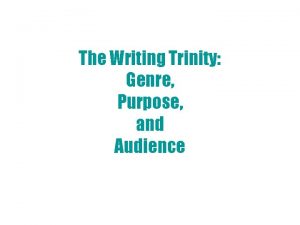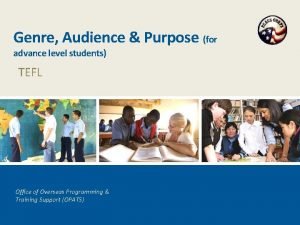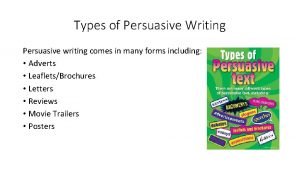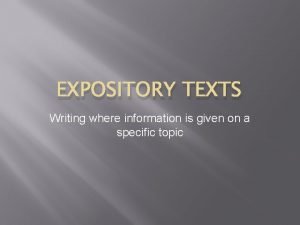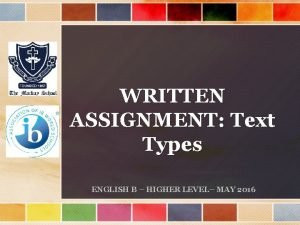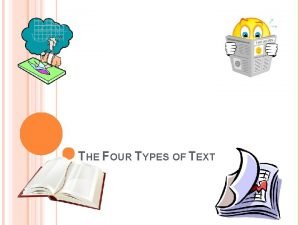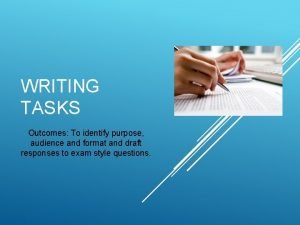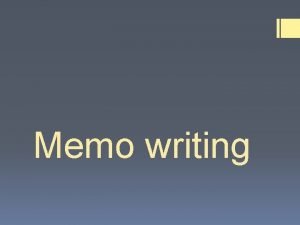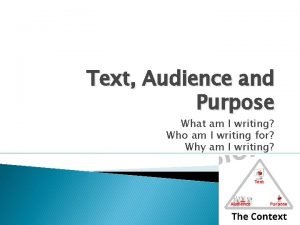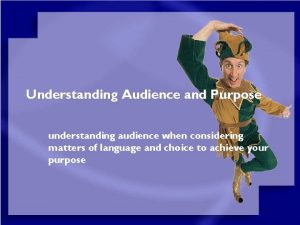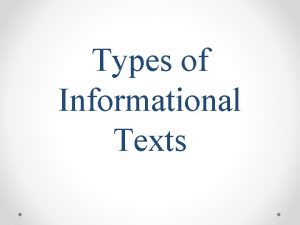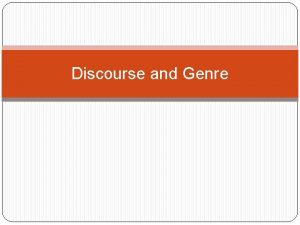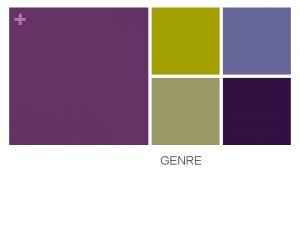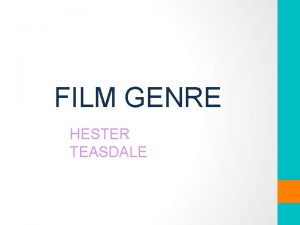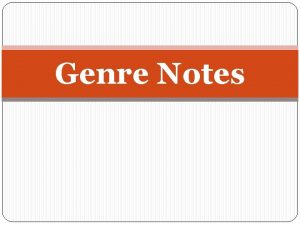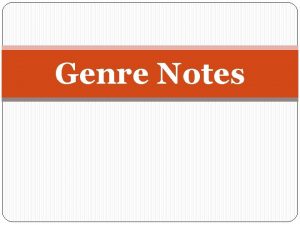Understanding Texts Type genre audience purpose Types of











- Slides: 11


Understanding Texts Type, genre, audience & purpose

Types of text • Usually refers to the look and shape of a text: – letters (formal and informal) – newspaper and magazine articles (factual) – leaflets (concise, to the point) – reviews (facts, opinion, to persuade) – talks & speeches (designed to be spoken) – poster (to inform, advertise…) – book (to inform, advise, instruct…)

Genre • Genre refers to content and purpose: – a review – a blog – an autobiography

Audience • Who does the writer want to read their work? – e. g. an article in ‘The Financial Times’? – a travel guide book? – problem page in ‘Sugar’? • Some texts aimed at two audiences, how? – e. g. a toy advert… to make kids want it, and to make parents buy it!

Identify the audience through content: • e. g. an article in ‘Top Gear’ about… the improved braking system in a new model of sports car… who is it for?

Identify the audience through form: • Large font, lots of pictures… who for? • Lots of text crammed into dense columns… who for?

Identify the audience through language (vocabulary): • Example text: “Today, we witnessed a discussion on fox -hunting. As one can imagine, this issue, although it has been debated for many years, still managed to elicit mixed emotions from all concerned. ” • What age group is this for? Why? – difficult vocabulary (e. g. “elicit”, not “bring out”) – complex sentences

Identify the audience through language (level of understanding): • Example text: “The object of a game of football is to get the ball in the opposing team’s goal. Sounds easy, doesn’t it? Well, firstly, the other team has the same thing in mind. Secondly, there are eleven of them who are trying to stop you. ” • What level of understanding is this written for? Why? – Simple, general explanations show this is for beginners.

Purpose • In an exam, the key thing to work out is: “What is the writer’s purpose? ” • Four common purposes of writing: – to inform, tell and explain – to describe and entertain – to argue, convince and persuade – to instruct and advise – and don’t forget to include what it is about… • Can you find of an example of each?

The main purpose • Texts often have more than one purpose. • You need to identify the main purpose: what is the most important message of the text and what is it about? • What is the main purpose of Texts A and B?
